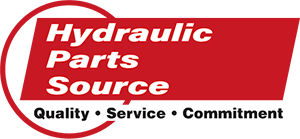Motors 101: Hydraulics at Work
This article, Motors 101, continues in HPS’ series of articles focused on “the basics” of major categories of hydraulic parts. If you are in fluid power sales or service, and need a reputable repair resource for hydraulic motors, pumps, or valves, HPS is ready to help.
Of many available types of fluid power products, motors are defined as “the actuators that release the power to perform the physical work of hydraulic systems.”
While hydraulic pumps get energy moving, and hydraulic valves control fluid energy, hydraulic motors do the work - in tandem with pumps - to transfer fluid energy into power.
Motors work by converting fluid pressure into motion. The pressure from the pump turns the motor’s output shaft by pushing on the gears, pistons, or vanes of the hydraulic motor.
Selecting a Hydraulic Motor
The design of an entire hydraulic system will change depending on the type of motor selected, so it’s important that motor selection comes first in the process, with that decision largely depending on the system’s load requirement, performance goals, and application.For example, an important consideration in the design and decision-making process is how motors are rated by displacement (volume of fluid it takes to rotate the output shaft once), measured in cubic inches per revolution (CIR) or cubic centimeters per revolution (CCR).
Besides displacement, additional operating considerations include:
- Operating torque, or the torque that the motor is capable of delivering
- Maximum system pressure
- Fluid temperature range, including minimum and maximum operating temperatures
- Maximum operating speed
- Power limits based on maximum volumetric flow through the motor
- Maximum fluid viscosity
Speed Classification and Motor Types
Hydraulic motors can be sorted in two ways:- Revolving speed - Defined as either a high speed, low torque (HSLT); or low speed, high torque (LSHT)
- Design configuration - Three main types are gear, vane, and piston motors
A low-speed motor operates at fewer than 500 rpm, and has a large displacement, size, and low revolving speed (equating again to high output torque – abbreviated as “LSHT”).
In terms of design, each type has a specific profile to meet the requirements, performance goals, and desired applications within a hydraulic system.
Hydraulic Motor Design Configurations in Detail
Gear Motors
Gear motors consist of rotating gears that move when hydraulic fluid enters the motor. They are categorized as either internal or external.External gear motors consist of matched gears enclosed in one housing. Internal gears can either consist of a direct-drive gerotor motor or orbiting gerotor motor, and generally have less gear teeth than external gear motors.
Key features of gear motors include:
- Small size and light weight
- Low cost
- Wide range of speed
- Wide temperature range
- Wide viscosity range
- Low inertia
- Large pressure and torque ripple
- Low volumetric efficiency and input pressure
- Low starting torque
- High noise level
- Poor stability at low speed
Vane Motors
A vane motor uses a rectangular vane to generate energy. When pressurized fluid enters the motor, the blades in the vane cause it to rotate and produce output torque.Key features include:
- Low noise level
- High torque at low speeds
- Low flow pulsation
- Simple design
- Versatility
- Vertical installation friendly
- Large leakage
- Low input pressure
- Unstable at low speed
- Anti-pollution capability not as good as gear motors
Piston Motors
Piston motors work by using mounted pistons to generate energy. They come in a variety of designs, such as radial-piston and axial piston, with both LSHT and HSLT classifications.A radial-piston hydraulic motor uses pistons mounted radially around a central axis, sometimes using multiple interconnected pistons in a star pattern, to generate energy. It is classified as LSHT, and generally operates efficiently for a long life, despite a higher cost and complex design.
An Axial-piston hydraulic motor produces an axial motion, rather than radial. It is similar to radial piston motors, and also offers a high efficiency and long life at a high cost. Unlike the radial design, however, they are not as efficient at low speeds and are classified as HSLT.
As Always with Hydraulics, It’s About Parts Working Together
Pumps and motors have overlapping characteristics and types (vane, gear, piston), and for good reason. They are both working together to provide the energy needed to put hydraulic equipment in motion.
The pump converts mechanical energy into fluid energy in the form of oil flow. The oil flow created by the hydraulic pump is then directed to the motor through the system’s valve.
But it is the motor that creates the output for this cohesive unit, converting the fluid energy into mechanical energy to perform the physical work.

